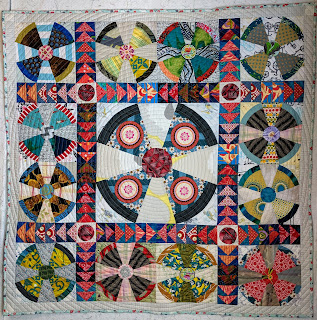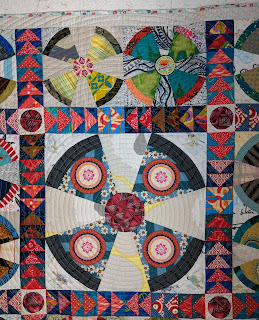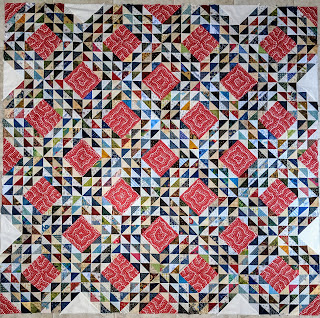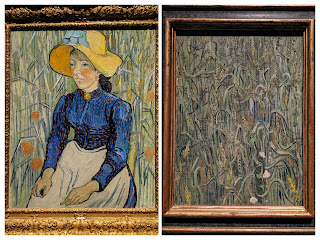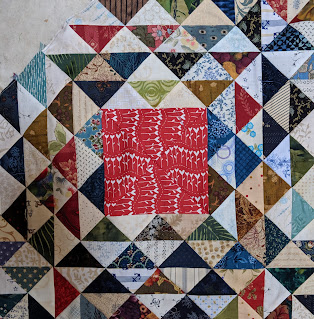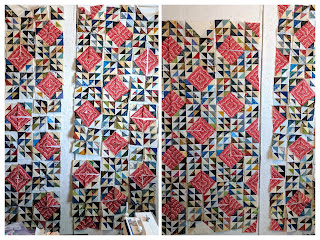One day I tried to quilt but the needle kept skipping so I sewed a shirtwaist dress instead. Hey, it was on my list of projects from the New Year. A friend helped me adjust the pattern; I brought it in case there was time to work on it. Not perfect but it fits well and the issues are worked out. Hopefully I'll sew another soon.
 |
| Shirtwaist dress |
We flew over the Great Sand Dunes National Park because our flight detoured around a storm along the Front Range. Wind caused these dunes pile to up against the mountains. Funny how small this park looks from the air. It seems immensely tall and hot each time I visit in person.
.
I gave a very short talk and workshop to the San Luis Valley Quilt Guild then a longer workshop at Kathy’s Fabric Trunk in Del Norte which went very well. Class fees went to Colorado wildfire relief and a summer camp program. It felt good to raise money for these causes.
QS took us on a boat trip down the Gunnison River above the Morrow Point Dam and what a treat that was! The weather was perfect, the scenery striking, and the NPS guides informative. We saw Curecanti’s Needle, a 700' granite spire formed by two intersecting faults that was the symbol of the Denver and Rio Grande Western narrow gauge railroad running through the canyon until the 1940s.
The other highlight of the trip was a pair of bald eagles hanging out in a dead tree. Wow!
Enjoy the day, Ann
.
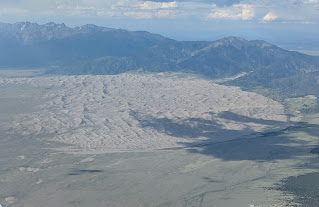 |
| Aerial view of Great Sand Dunes National Park |
I gave a very short talk and workshop to the San Luis Valley Quilt Guild then a longer workshop at Kathy’s Fabric Trunk in Del Norte which went very well. Class fees went to Colorado wildfire relief and a summer camp program. It felt good to raise money for these causes.
QS took us on a boat trip down the Gunnison River above the Morrow Point Dam and what a treat that was! The weather was perfect, the scenery striking, and the NPS guides informative. We saw Curecanti’s Needle, a 700' granite spire formed by two intersecting faults that was the symbol of the Denver and Rio Grande Western narrow gauge railroad running through the canyon until the 1940s.
 |
| Curecanti's Needle |
The other highlight of the trip was a pair of bald eagles hanging out in a dead tree. Wow!
Enjoy the day, Ann
